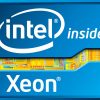AMD’s Zen architecture has been making news almost every month but up until now we have had very little actual information on it. The good news for AMD fans is that now there’s more information on the upcoming CPU generation and Zen does look very promising.
Online sources have now reported that Zen will have significantly increased per-core performance. This will be achieved by nearly doubling the number of decoders, ALUs and floating-point execution units per core, compared to the current desktop FX processors. More specifically Zen will have four decoders per core, four ALUs per core and four 128-bit wide floating point execution units that can be combined in two 256-bit pipelines in case of need. As a comparison Bulldozer had just two decoders and two ALUs per integer core with the FPU block being shared inside a computational module thus further limiting its performance. By introducing Zen AMD will move away from the module architecture seen in Bulldozer and its later implementations, which was not a bad idea in itself. When released, however, the Bulldozer generation suffered from less than optimal scheduling due to Windows 7 not really knowing how to work with this architecture. Windows 8 and later Windows versions did not improve the situation and given certain hardware limitations in the architecture itself as well Bulldozer did not shine in benchmarks and was only competitive in highly-threaded applications.
AMD’s Zen will also have an Intel-like SMT technology, which works like Hyper-Threading a lot, which, hopefully will increase performance even more. The Zen generation is expected in late 2016.
Source: Techpowerup.com

